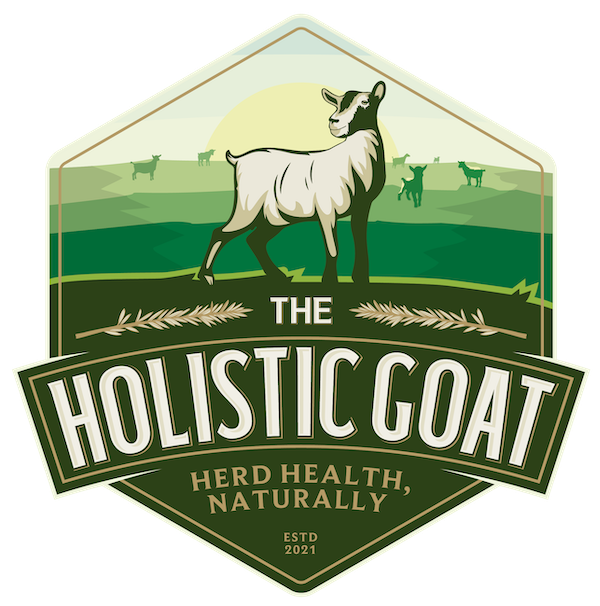Chanca Piedra | Stone Breaker | Phyllanthus Niruri
Posted by theholisticgoat on May 10, 2023 at 6:22 amChanca Piedra is commonly recommended as a human prevention and treatment of kidney/gallbladder/liver stones. This discussion can explore possible parallels to treatment of urinary calculi in goats.
Haley replied 4 weeks ago 3 Members · 7 Replies- 7 Replies
“P.niruri intake is safe and does not cause significant adverse effects on serum metabolic parameters. It increases urinary excretion of magnesium and potassium caused a significant decrease in urinary oxalate and uric acid in patients with hyperoxaluria and hyperuricosuria. The consumption of P.niruri contributed to the elimination of urinary calculi.”
I have seen some recent comments on using chanca piedra beneficially for calcium based stones but potentially harmful for phosphorus based stones. Of course I can’t seem to find the study so now I’m just relying on commentary. Has anyone run into this?
I have heard that in social circles but haven’t ever found anything to support it. I just finished reading a book that summarized a bunch of studies on it and couldn’t find anything in there, either. My conclusion is that it’s suitable for both types.
I just tried again with this new research tool and this is all I could find:
Introduction
Chanca piedra, also known as Phyllanthus niruri, is a traditional herb recognized for its medicinal properties, particularly in Ayurvedic, Chinese, and Malay ethnomedicine. It is used to treat various ailments and is also known for its antimicrobial activity.
Key Insights
- Phyllanthus niruri exhibits significant antimicrobial potency, with methanolic and alcoholic extracts showing antibacterial activity against common pathogens found in skin, respiratory, urinary, and gastrointestinal infections1.
- The plant contains essential nutrients, including a notable amount of phosphorus (15.42mg/100g), which may be relevant to its use in relation to phosphorus stones2.
Conclusion
Chanca piedra has been identified as having substantial antimicrobial properties and contains essential nutrients, including phosphorus. This suggests a potential link between its nutrient composition and its traditional use in treating ailments, possibly including phosphorus-related conditions such as kidney stones.
consensus.app
chanca piedra phosphorus stone - Consensus
Find out what the research says about 'chanca piedra phosphorus stone'
Effects of the aqueous extract of Phyllanthus niruri Linn during pregnancy and lactation on neurobehavioral parameters of rats’ offspring
“The objective of this study was to investigate the effects of administration of aqueous extract of P. niruri (AEPN) during pregnancy and lactation, in maternal toxicity, reflex maturation, and offspring memory.
Materials and methods: Pregnant rats were divided into three groups (n = 8/group): Control (vehicle), AEPN 75, and AEPN 150 (each respectively treated with P. niruri at a dose of 75 and 150 mg/kg/day). The animals were treated via intragastric gavage during pregnancy and lactation. Weight gain, feed intake, and reproductive performance were analyzed in the mothers. In the offspring, the following tests were performed: Neonatal Reflex Ontogeny, Open Field Habituation Test and the Object Recognition Test in adulthood.
Results: Maternal exposure to AEPN did not influence weight gain, feed intake, or reproductive parameters. In the offspring, anticipation of reflex ontogenesis (time of completion) was observed (p < 0.05). During adulthood, the AEPN groups presented decreases in exploratory activity upon their second exposure to the Open Field Habituation Test (in a dose-dependent manner) (p < 0.05). In the Object Recognition Test, administration of the extract at 75 and 150 mg/kg induced significant dose-dependent improvements in short and long-term memory (p < 0.05).
Conclusion: Administration of the AEPN accelerated the reflex maturation in neonates, and improved offspring memory while inducing no maternal or neonatal toxicity.”
pubmed.ncbi.nlm.nih.gov
Administration of the AEPN accelerated the reflex maturation in neonates, and improved offspring memory while inducing no maternal or neonatal toxicity.
Maternal-fetal repercussions of Phyllanthus niruri L. treatment during rat pregnancy
“Pregnant rats were distributed into four experimental groups: Control = treated with water (vehicle); Treated 150 = treated with P. niruri at dose 150 mg/kg and; Treated 300 = treated with P. niruri at dose 300 mg/kg; and Treated 600 = treated with P. niruri at dose 600 mg/kg. The rats were treated by intragastric route (gavage) with P. niruri or vehicle (water) from gestational day 0 to 21. At day 21 of pregnancy, maternal reproductive outcomes, biochemical profile and maternal renal tissue were evaluated. The fetuses and placentas were collected and analyzed.
Results: Treatment with P. niruri did not alter the reproductive performance outcomes of rats. However, treated 600 group presented with changes in maternal kidney weight and morphology. The plant did not present teratogenic effect, but caused fetal macrosomia and increased ossification sites.
Conclusion: Treatment with aqueous extract of P. niruri administered during gestation did not cause reproductive toxicity, but led to changes in maternal kidneys and in offspring weight, showing that the leaf extract of this plant can produce detrimental effects during pregnancy.”
pubmed.ncbi.nlm.nih.gov
Maternal-fetal repercussions of Phyllanthus niruri L. treatment during rat pregnancy - PubMed
Treatment with aqueous extract of P. niruri administered during gestation did not cause reproductive toxicity, but led to changes in maternal kidneys and in offspring weight, showing that the leaf extract of this plant can produce detrimental effects during pregnancy.
And just to add to that, in the book Chance Piedra: Nature’s Secret for Kidney Stones, the author states:
“Chanca piedra has been used traditionally as a menstrual stimulant. Women who are pregnant should always check with their doctor before taking any herbal supplement. Since chance piedra has not been studied in pregnant animals or humans, it is contraindicated in pregnancy.
Obviously we’re now seeing studies, but the overall consensus is that it should be avoided during pregnancy.
Excellent addition!
Log in to reply.



